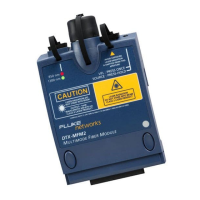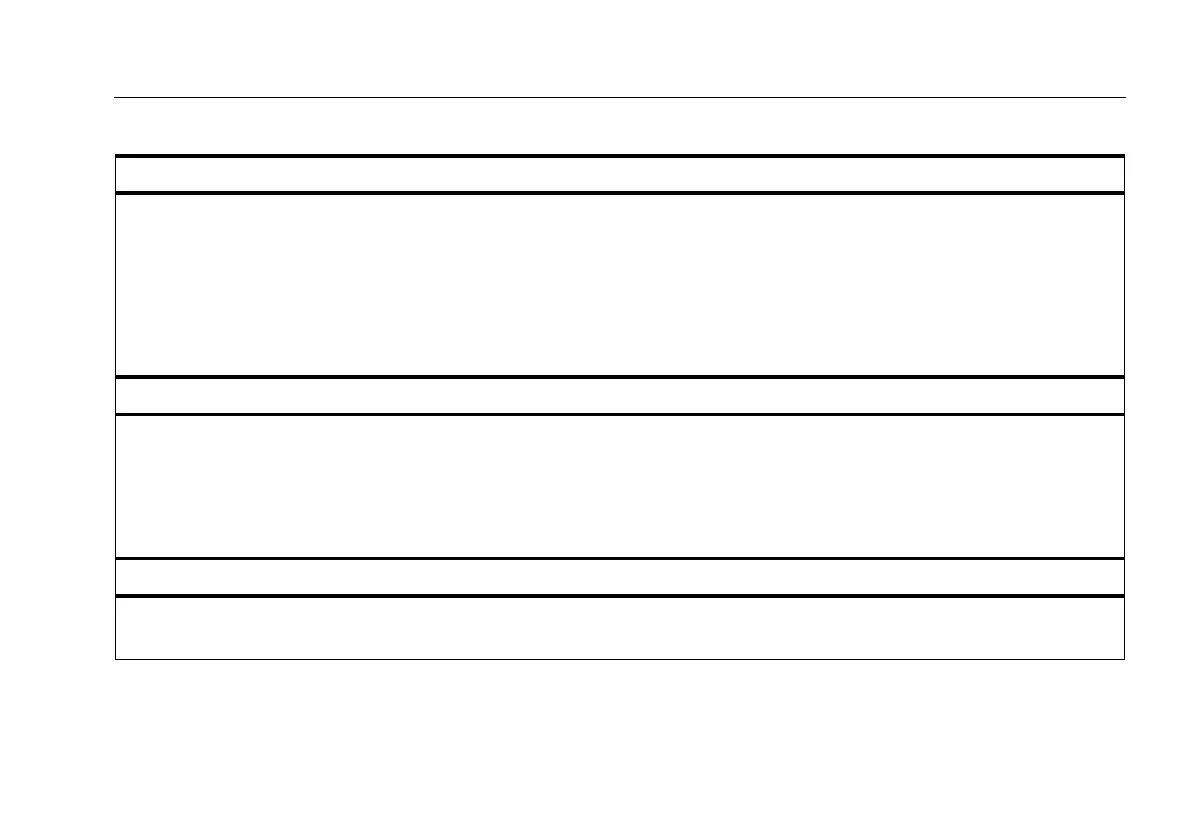Diagnosing Copper Cabling Faults
Common Causes of Copper Cabling Failures
6-7
6
Table 6-1. Diagnosing Twisted Pair Test Failures (cont.)
-continued-
Characteristic impedance exceeds the limit or an anomaly is detected
•
Bad connection
•
Cable compression (tight cable ties, pinches, kinks, etc.)
•
Mismatch of cable types
•
Water in cable jacket
•
Excessive loading at coaxial cable tap
•
Incorrect terminator value (coaxial cable)
Resistance gives FAIL, FAIL*, or PASS* result
•
Cabling is too long
•
Bad connection due to oxidized or loose contacts
•
Wire gauge is too thin
•
Wrong patch cord type used
Tip: The resistance test in Single Test mode features a
scanning function that runs the resistance test
continuously. This function is helpful for locating
intermittent resistance faults. Note that the resistance
test is available in Single Test mode only if the selected
standard has a limit for resistance.
Length gives FAIL result
•
Cable is too long (may need to remove coiled service loops)
•
NVP is set incorrectly

